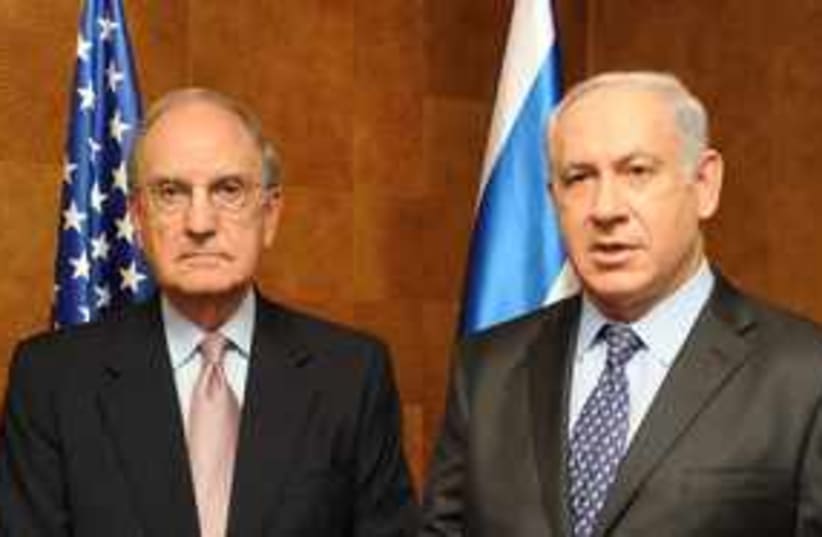RELATED:PM says will meet Abbas in Paris, but PA yet to agree Mitchell to meet Assad in bid to reopen Israeli-Syrian ties Mitchell: Netanyahu, Abbas tackling toughest issues first "We are committed and I am committed to trying to get to a peace agreement that will secure Israel’s security and other vital national interests," he said. "That is my goal and that is our policy."The prime minister continued, "We will continue to pursue it [a peace agreement], I very much look forward to continuing it, with Abu Mazen, because we have an historic mission to continue those good talks, to arrive at an historic peace. That is our effort," he declared. "that is our policy and that is our goal."Mitchell brought a message to the Israeli and Palestinian peoples, as well as their leaderships, that US President Obama and US Secretary Clinton remain totally committed to comprehensive peace in the Middle East. That is, to an agreement between Israel and the Palestinians, an end to this conflict once and for all time, to an Israel and Syria, to an Israel and Lebanon, and the full normalization of relations between Israel and all of its neighbors in the region.Mitchell added that while he understands that the path will and has included many hurdles, the US is determined more than ever to realize the common objective of Middle East peace and security, and that the US will "continue its efforts in that regard, undeterred and undaunted by the difficulties."
Netanyahu: I am committed to peace with Palestinians
PM meets with Mitchell; says "We are committed and I am committed to trying to get to a peace agreement that will secure Israel’s security."

RELATED:PM says will meet Abbas in Paris, but PA yet to agree Mitchell to meet Assad in bid to reopen Israeli-Syrian ties Mitchell: Netanyahu, Abbas tackling toughest issues first "We are committed and I am committed to trying to get to a peace agreement that will secure Israel’s security and other vital national interests," he said. "That is my goal and that is our policy."The prime minister continued, "We will continue to pursue it [a peace agreement], I very much look forward to continuing it, with Abu Mazen, because we have an historic mission to continue those good talks, to arrive at an historic peace. That is our effort," he declared. "that is our policy and that is our goal."Mitchell brought a message to the Israeli and Palestinian peoples, as well as their leaderships, that US President Obama and US Secretary Clinton remain totally committed to comprehensive peace in the Middle East. That is, to an agreement between Israel and the Palestinians, an end to this conflict once and for all time, to an Israel and Syria, to an Israel and Lebanon, and the full normalization of relations between Israel and all of its neighbors in the region.Mitchell added that while he understands that the path will and has included many hurdles, the US is determined more than ever to realize the common objective of Middle East peace and security, and that the US will "continue its efforts in that regard, undeterred and undaunted by the difficulties."